Edward Munch’s Scream is a particularly famous painting, it has even become an emoji! But what does this painting really tell us? Why did Munch paint this scream? Discover the hidden meanings behind this painting! Analysis.
Summary
Edvard Munch: a troubled artist

To understand the work of Edvard Munch (1863-1944) a little better, we must look at his childhood. Munch was confronted with death at a very early age: his mother died of tuberculosis when he was only 5 years old, and he lost one of his sisters to the same disease when he was only 13. Shortly afterwards, another of his sisters suffered from severe depression and was committed for life, while his brother died suddenly of pneumonia only a few months after his marriage.
Traumatised by these successive tragedies, Munch was often affected by depression, which is regularly visible in his work. His artworks often deal with themes of anguish, melancholy, fear, death and pain. In his own words, he wanted to express “the most subtle states of mind” through painting.
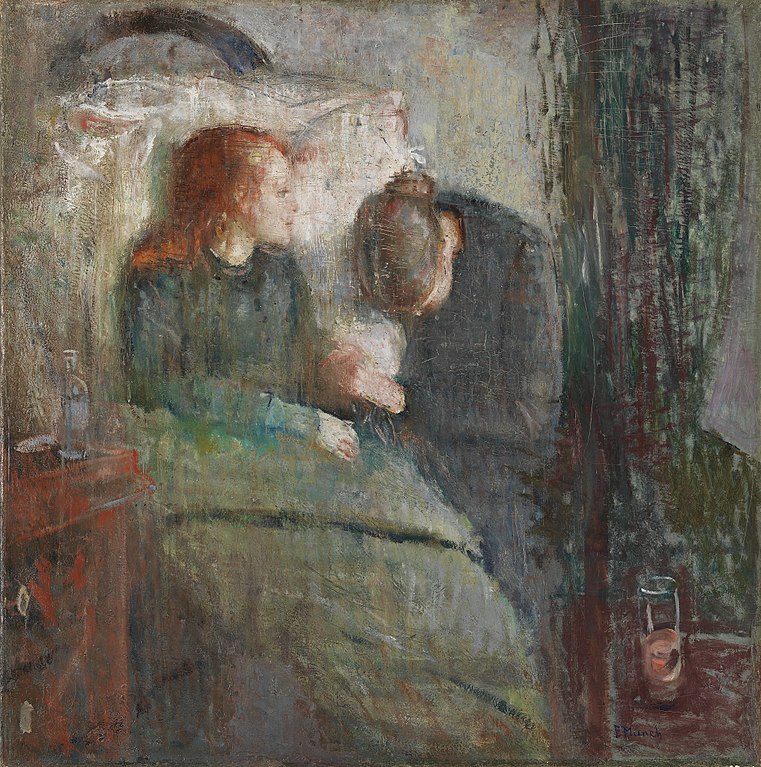
What is this Scream?
There is not one but five versions of “The Scream”: three paintings, a pastel and a lithograph created between 1893 and 1917. The Scream is part of a series of paintings entitled the “Frieze of Life”.
So what does this painting represent? An excerpt from Edvard Munch’s diary gives us some insight. On 22 January 1892, he wrote these lines:
I was walking along the road with two
friends – then the sun went {I went} down
Suddenly the sky turned blood-red
– and I felt
a breath of melancholy
– an exhausting pain
under my heart – I paused, leaning against the fence, tired to death – above the blue-black fjord and city there was blood ‹in› tongues of fire
My friends went on and I stood
there trembling
with anxiety –
and I felt that a gre{a}t infinit\e/ scre{a}m went through nature
Yes! Contrary to popular belief, the scream does not come from the figure but from nature. The figure appears frightened and covers his ears to blur the deafening scream.

A volcanic eruption at the origin of the Scream?
So where did this “infinite scream that went through nature” come from? According to some scientists, it could be linked to a natural phenomenon. In 1883 Krakatoa, an Indonesian volcano, erupted violently and caused a deafening noise, the loudest heard on Earth. The seismic tremors are said to have travelled seven times around the globe with a sound so powerful that it was heard 4,800 km away.
The eruption is also said to have released millions of particles of volcanic ash into the atmosphere, scattering as far away as Norway.
This phenomenon could explain what the artist describes in his diary, the blood-red sky and the “infinite scream that went through nature”.
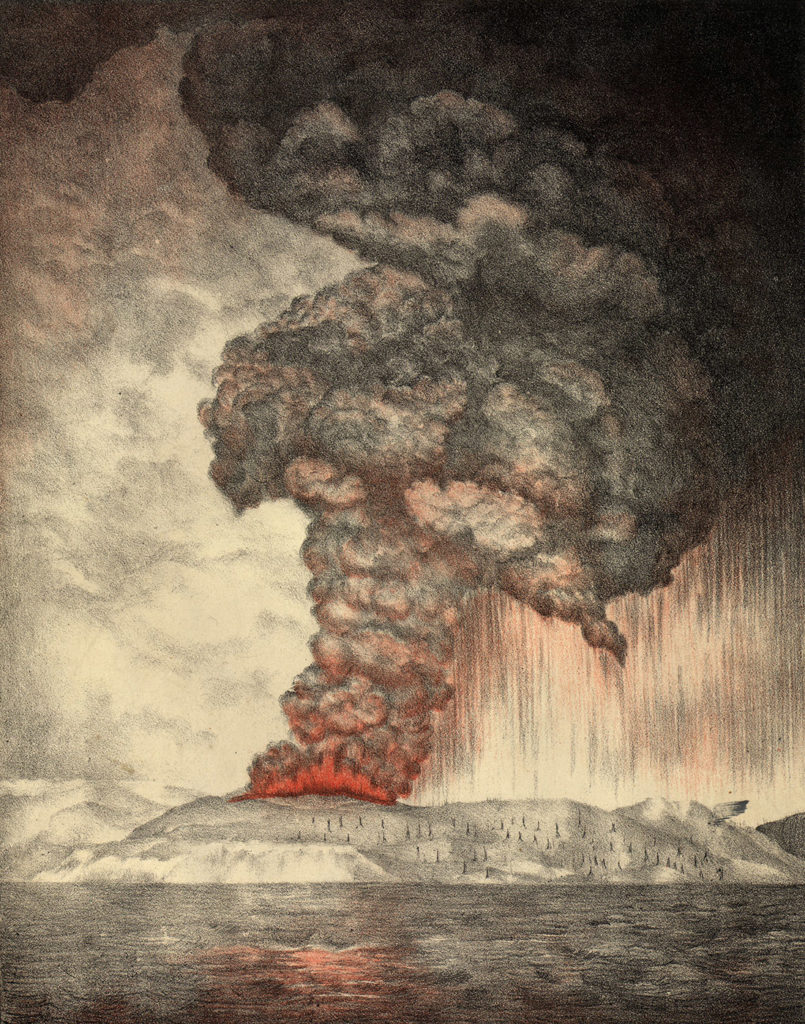
Another theory has more to do with the artist’s tortured personality. Munch lived next door to the psychiatric hospital where his sister was committed. The scream could be a representation of his anxiety and anguish.
A terrified and terrifying face
In 1892, a year before painting “The Scream”, Munch painted “Despair”. The two paintings are very similar: colours, format, proportions… everything is identical except for the main character.
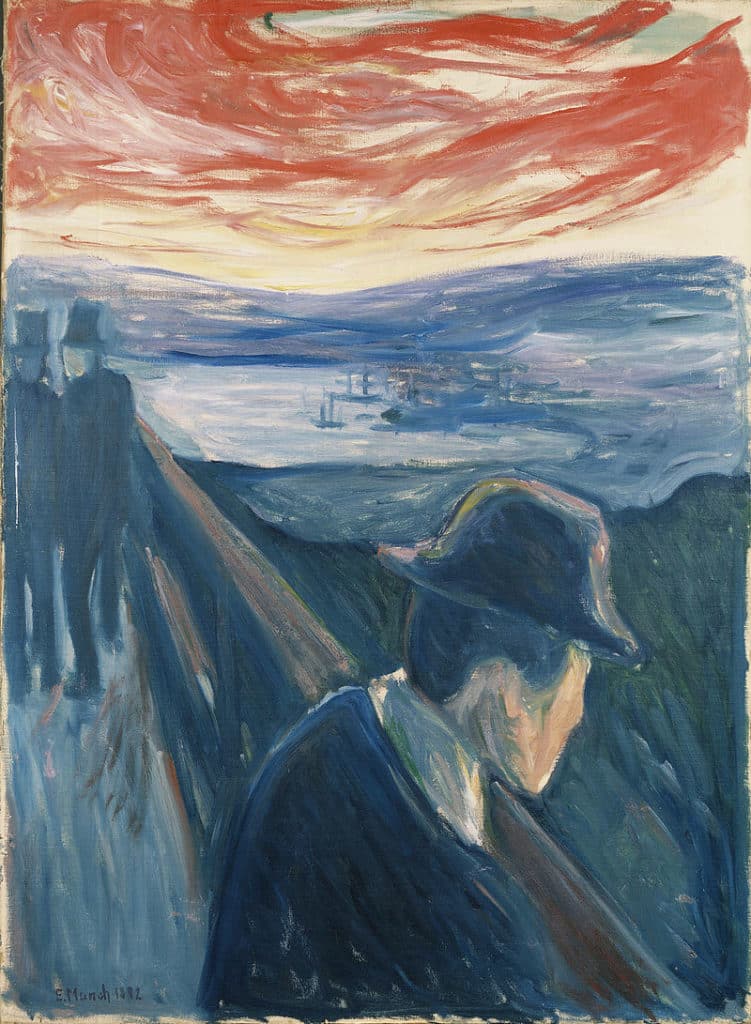
In The Scream, the man with the coat and hat is replaced by this mysterious figure with an emaciated face that is difficult to describe: is it a man or a woman? is it a living or a dead person? is it wearing a dress or a coat?… So where does this face of horror come from?
Robert Rosenblum, an art historian, has suggested that this face may be inspired by a mummy of the Peruvian Chachapoya people. Indeed, in 1889 Edvard Munch studied in Paris after having obtained a scholarship. It is possible that he saw this mummy on display at the Ethnographic Museum at the Trocadero, and it is true that the similarities are quite striking.
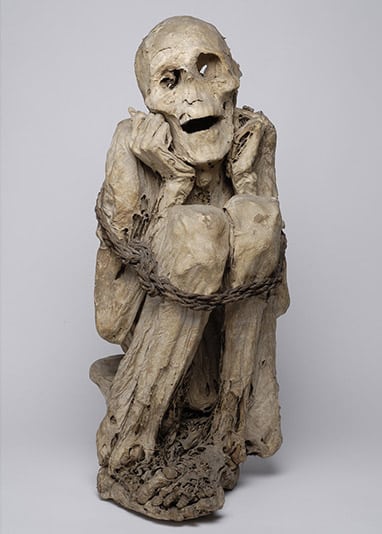
Who are the two figures in the distance?
If you look closely at this work, two figures seem to be moving away to the left. They are friends of the artist, as he describes in his diary: “I was walking along the road with two friends (…) my friends went on and I stood there trembling with anxiety”.
This sentence also explains that this work is autobiographical and that the character covering his ears in terror is the artist himself.
The reception of the artwork
The Scream was first shown to the public in 1895 at the Blomqvist Gallery in Oslo. At the time, there was much criticism and many questioned Edvard Munch’s sanity, so much so that one medical student even called him crazy.
On the painting in Norway’s Nasjonalmuseet, an enigmatic inscription in the upper left-hand corner reads in Norwegian: “Can only have been painted by a madman”. For a long time it was wondered who had put down this inscription. Finally, recent analyses have revealed that it was Munch himself who put the phrase there, in a nod to his detractors.
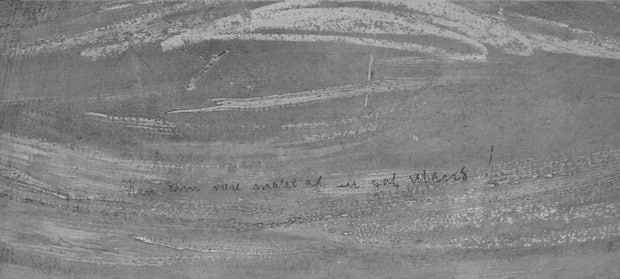
Today, The Scream is considered to be a masterpiece. With its vibrant and unrealistic colours, it shows a new way of creating art. It is a turning point between the symbolist and expressionist movements.
In 2012, one of the versions of The Scream was sold at auction at Sotheby’s New York for $119.92 million!
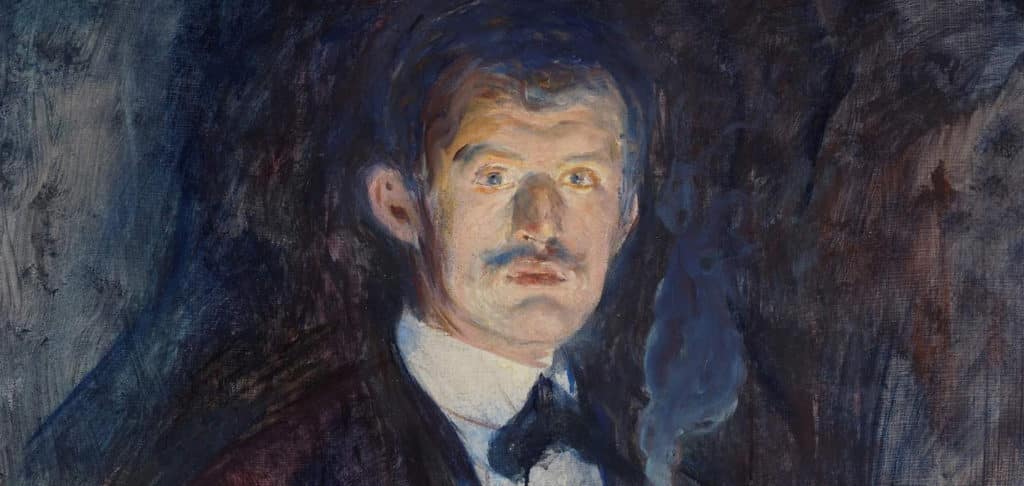
A scream entered into popular culture
The Scream is now one of the world’s best known masterpieces. It has been the subject of numerous parodies, starting with the emoji in all our phones and including many, many covers…
ALSO READ: Grant Wood’s American Gothic: the hidden meanings of a masterpiece
Where is Edvard Munch’s Scream exhibited?
As explained above, there are five versions of The Scream. The most famous is the 1893 version in the National Gallery (Nasjonalgalleriet) in Oslo.
Two other versions (a pastel on cardboard from 1893 and a tempera on cardboard from 1910) are on display at the Munch Museum (Munchmuseet) also in Oslo. A pastel on cardboard from 1895 is in a private collection.

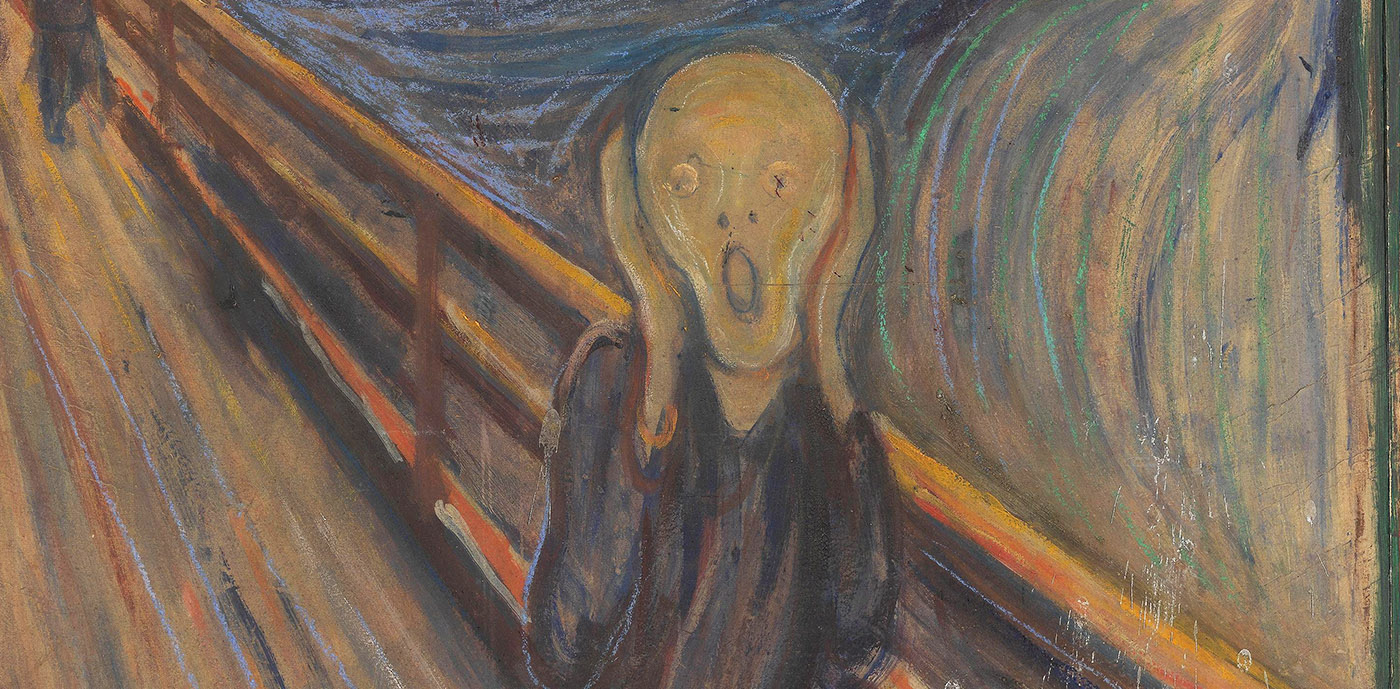

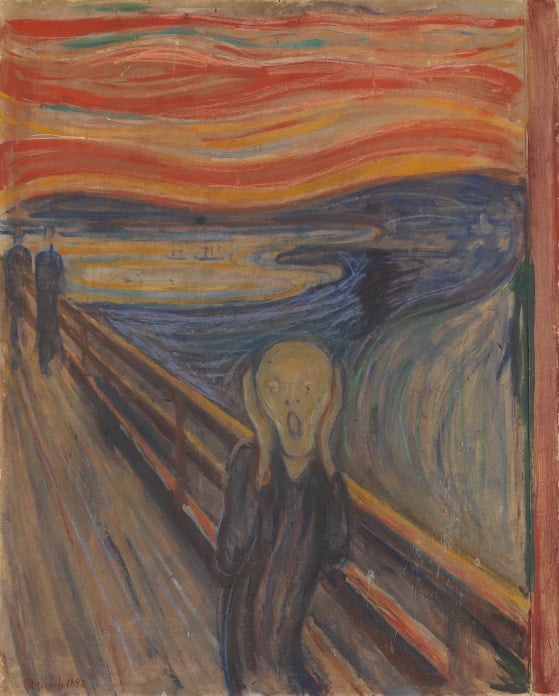
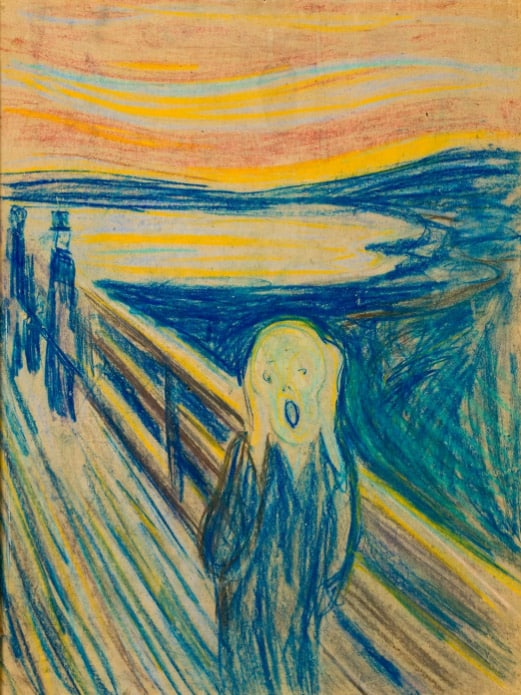
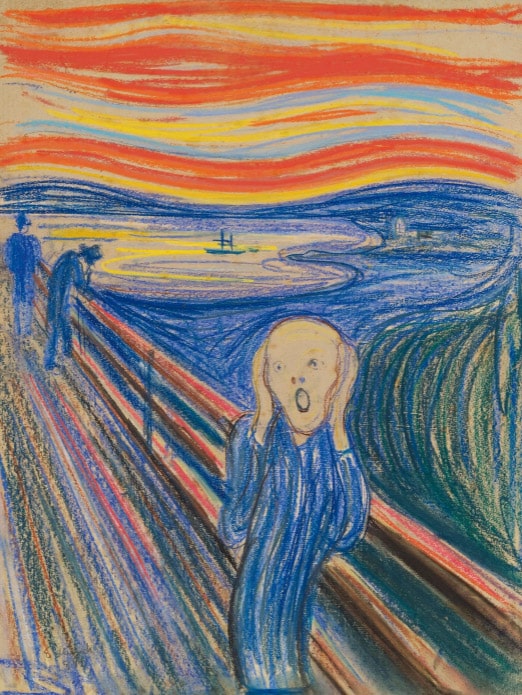
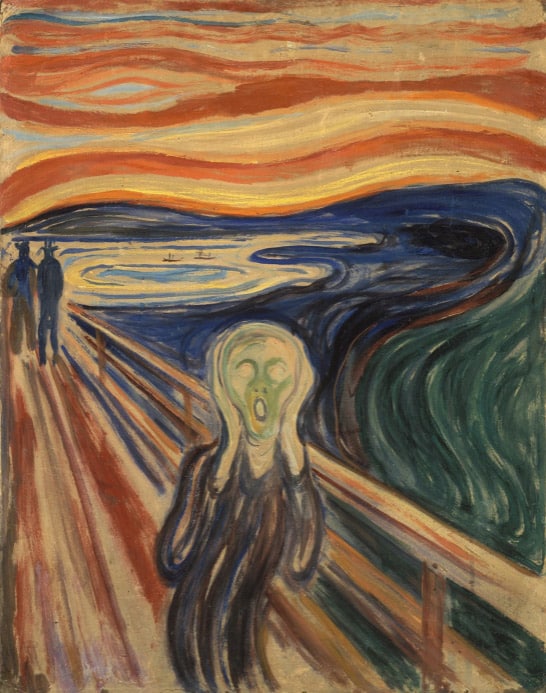
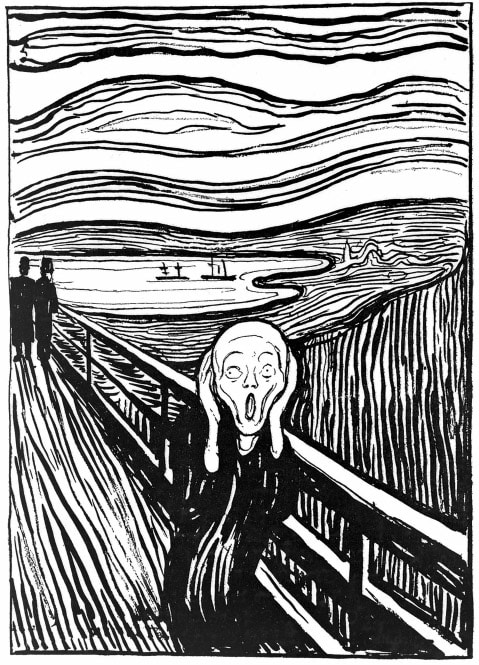
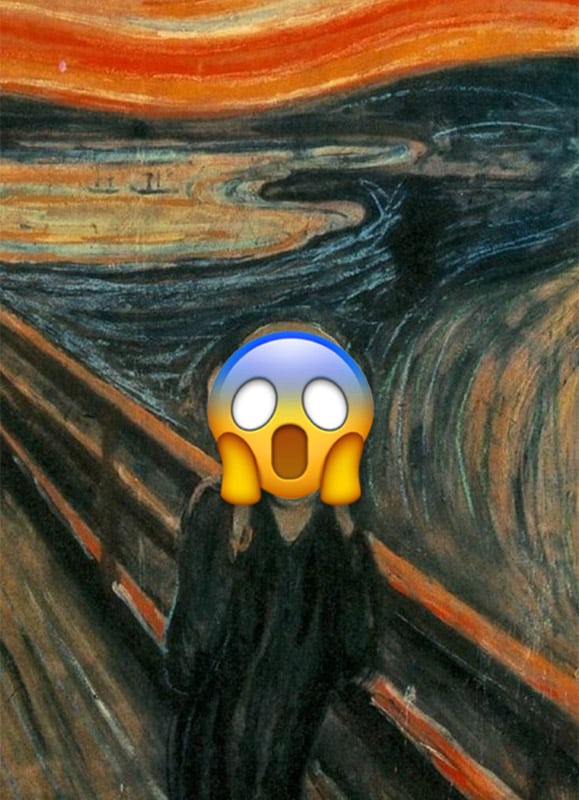




People reacted to this story.
Show comments Hide commentsThe explanation of “THE SCREAM” is very well done and satisfies the curiosity of this amateur artist historian; particularly, the Impressionists.
Brief Bios on each artist is greatly appreciated.
Thanks!
Rodger Puckett, Ret.
Myrtle Beach, SC-USA